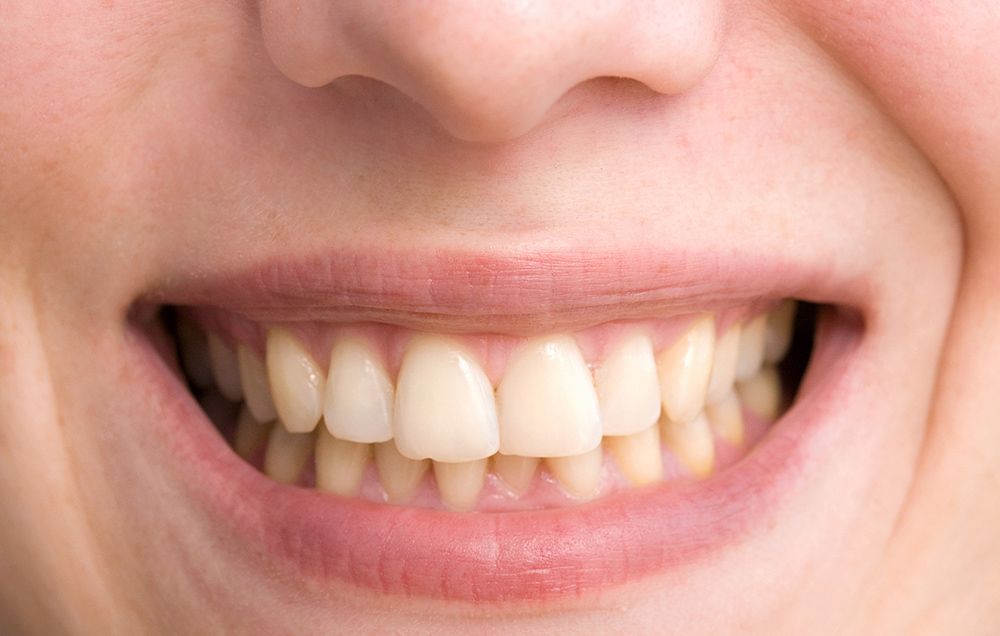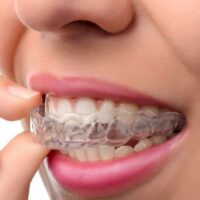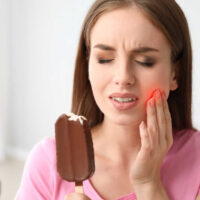Have you ever taken a closer look at your teeth and noticed that they appear more yellow near the gum line compared to the tips? This yellowing phenomenon could be attributed to dental plaque, a significant oral health concern. The discoloration near the gums not only affects the aesthetic appeal of your teeth but might also indicate potential risks for tooth decay, gum disease, and various other oral health problems. In this article, we’ll delve into the reasons behind yellow teeth near the gum line and explore effective preventive measures and solutions.
Why Are My Teeth Yellow Near The Gums?: Different Causes of Discoloration
Numerous factors contribute to the discoloration of teeth, particularly near the gum line. Habits such as consuming coffee, tea, and certain beverages can lead to staining. Additionally, the use of tobacco products and specific medications can contribute to tooth discoloration. Physical trauma to the teeth can also cause changes in their color.
One of the natural processes that can result in yellowing teeth is aging. Over time, the protective enamel layer on the tooth’s surface becomes thinner, exposing the yellow-colored dentin underneath. Furthermore, the accumulation of dental plaque, especially near the gum line, can intensify the yellowing effect.
Understanding Dental Plaque and Tartar
Dental plaque is a soft and sticky layer composed of bacteria, food particles, and proteins that adhere to the tooth’s surface. Initially, plaque may appear colorless, but it gradually turns yellow as it accumulates. This film forms when oral bacteria interact with food byproducts and proteins in the mouth. While plaque primarily sticks to tooth enamel, it can also find its way beneath the gum line and attach to dental fillings or other dental work.
Regular brushing and flossing play a crucial role in eliminating plaque. However, effective oral hygiene requires consistent and proper practices. Inadequate brushing or skipping it altogether allows plaque to build up on teeth and gums.
The bacteria within plaque feed on sugars and starches present in your diet. In the process, they produce acid that can erode tooth enamel. If not removed, plaque and its acidic byproducts can lead to tooth decay and, in severe cases, tooth loss.
Plaque’s sticky nature causes it to trap minerals from saliva, leading to its transformation into tartar if left untreated for 24 to 72 hours. Tartar, characterized by its yellow color, is challenging to remove compared to plaque. The accumulation of tartar at the gum line, both on the front and back surfaces of teeth, is typical. This accumulation, above and below the gum line, can trigger tooth decay and gum disease, marked by irritation and inflammation of the gums.
Tackling the Issue: Prevention and Treatment
Preventing yellowing near the gum line involves proactive measures to eliminate plaque before it solidifies into tartar. Here are some practical steps to maintain optimal oral health:
- Regular Brushing and Flossing: Brush your teeth twice a day and floss daily to remove bacteria from hard-to-reach areas
- Tartar Control Toothpaste: Using toothpaste formulated for tartar control can help inhibit plaque buildup
- Antiseptic Mouthwash: Must use mouthwash that aids in reducing oral bacteria and promoting gum health
- Healthy Diet: Limit sugary and starchy foods that bacteria thrive on, promoting plaque formation
- Avoid Smoking: Smokers are at a higher risk of tartar buildup, making quitting smoking an essential step for oral health
Addressing the yellow color near the gum line necessitates identifying the underlying cause. If the discoloration is a result of consuming staining beverages like coffee or tea, teeth whitening treatments might be effective. However, if tartar buildup is responsible, seeking professional dental assistance is crucial.
Dentists use a procedure known as scaling to remove tartar. This involves using specialized tools to safely scrape away tartar without harming tooth enamel. Removing tartar not only restores the natural color of teeth but also mitigates the risks of gum disease and tooth loss.
Final Words: Why Are My Teeth Yellow Near The Gums?
In conclusion, the yellowing of teeth near the gum line can be attributed to factors like aging, staining beverages, and the buildup of dental plaque and tartar. By adopting proper oral hygiene practices, maintaining a healthy lifestyle, and seeking professional dental care when necessary, you can effectively prevent and address the discoloration issue. Remember that consistent oral care is vital to preserving the brightness and health of your smile.



